It’s a wonderful world — and universe — out there.
Come explore with us!

Science News Explores
Could star trek replicators exist.
Experts break down what’s possible and what’s not for this sci-fi invention
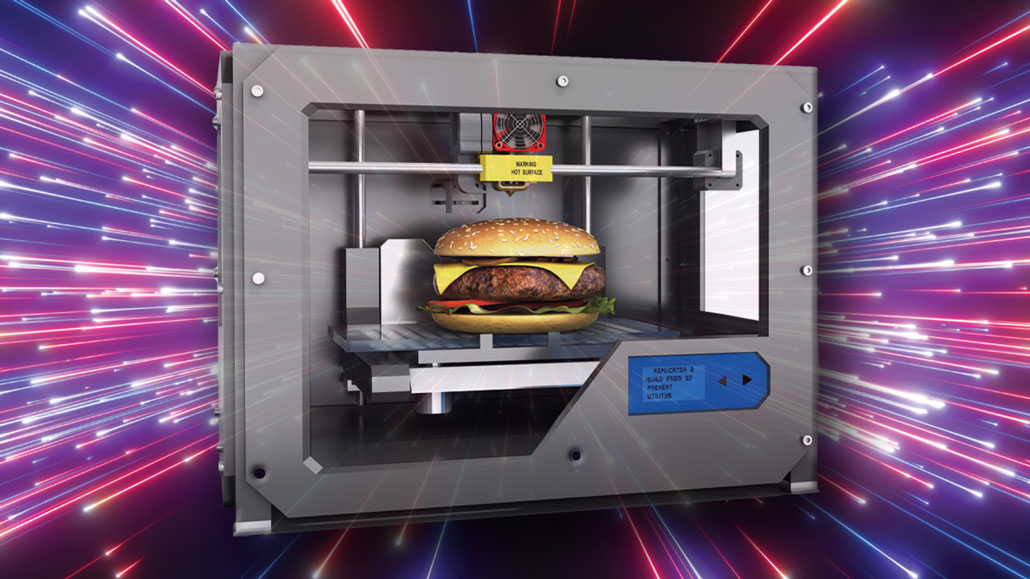
It’s not quite a replicator, but maybe future space travelers will be able to 3-D print dinner on demand.
REPLICATOR: WACOMKA/SHUTTERSTOCK; BACKGROUND: NOSOROGUA/SHUTTERSTOCK
Share this:
- Google Classroom
By Deborah Balthazar
September 5, 2023 at 6:30 am
Let’s say you’re hungry. Wouldn’t it be great to walk up to an appliance, tell it what food you want and have that food appear magically in front of your eyes? In the TV franchise Star Trek , this is possible with a piece of technology known as a “replicator.” Getting to a future where this tech exists, though, might take a bit of imagination and invention.
The Star Trek replicator is used to make all kinds of objects, from a hot cup of Earl Grey tea to spare parts for spaceships. Biowaste and other recycled material is broken down into basic parts: water, carbon and other molecules , explains Erin Macdonald. She’s an astrophysicist and science advisor for the Star Trek franchise. Those molecules are then fed into the replicator. When a person asks for an item, lasers reassemble the bits according to a recipe in the computer until it looks like that cup of tea, a dish of mint-chocolate-chip ice cream or a piece of a warp coil.
What, exactly, is the biowaste that goes into the machine? It will probably include poop, says Macdonald. “We don’t want to think about that too much.”
Educators and Parents, Sign Up for The Cheat Sheet
Weekly updates to help you use Science News Explores in the learning environment
Thank you for signing up!
There was a problem signing you up.
The replicator’s superfast lasers convert incoming matter into energy. Then, they change it back into matter . “On a fundamental level, there is nothing that prevents you from building a replicator-like machine,” says Gianluca Sarri. He’s a quantum physicist who works with lasers at Queen’s University Belfast in the United Kingdom.
But a replicator is just not a top priority at the moment, he says. All that conversion of matter to energy back to matter again would require a lot of energy. Plus, there’s no way to currently make an object appear within seconds. What’s more: Right now food can be generated in a much simpler way — by cooking.
Let’s print a meal
For now, astronauts eat food sent up from Earth. To make sure they get the food they need, future space tourists and crews might rely on hydroponics — growing plants without soil. Cooking that food in space like you do at home might be an option. But it might not always be practical inside the tight fit of a spaceship. So spacefarers might instead print that meal with a 3-D printer.
Today’s 3-D printers are similar to regular printers, notes Jonathan Blutinger. Just as normal printers must be fed cartridges of ink, 3-D printers must be fed cartridges of printing material. Blutinger is a design engineer.
While at the Creative Machines Lab at Columbia University in New York City, he helped create a 3-D printer that acts like a digital chef. “The printer will not allow you to make something from nothing,” he says. “You need to start with the right base ingredients.”
Blutinger’s group recently started with ingredients for a “cake.” They put graham-cracker paste, strawberry jam, peanut butter, Nutella, cherry drizzle, banana puree and frosting into the food printer. The printer assembled and cooked the ingredients with lasers to make a slice of cake.
The cake tasted great, Blutinger says, but it was definitely a unique experience because the flavors came in “waves.” The group’s paper about the cake appeared March 21 in npj Science of Food .
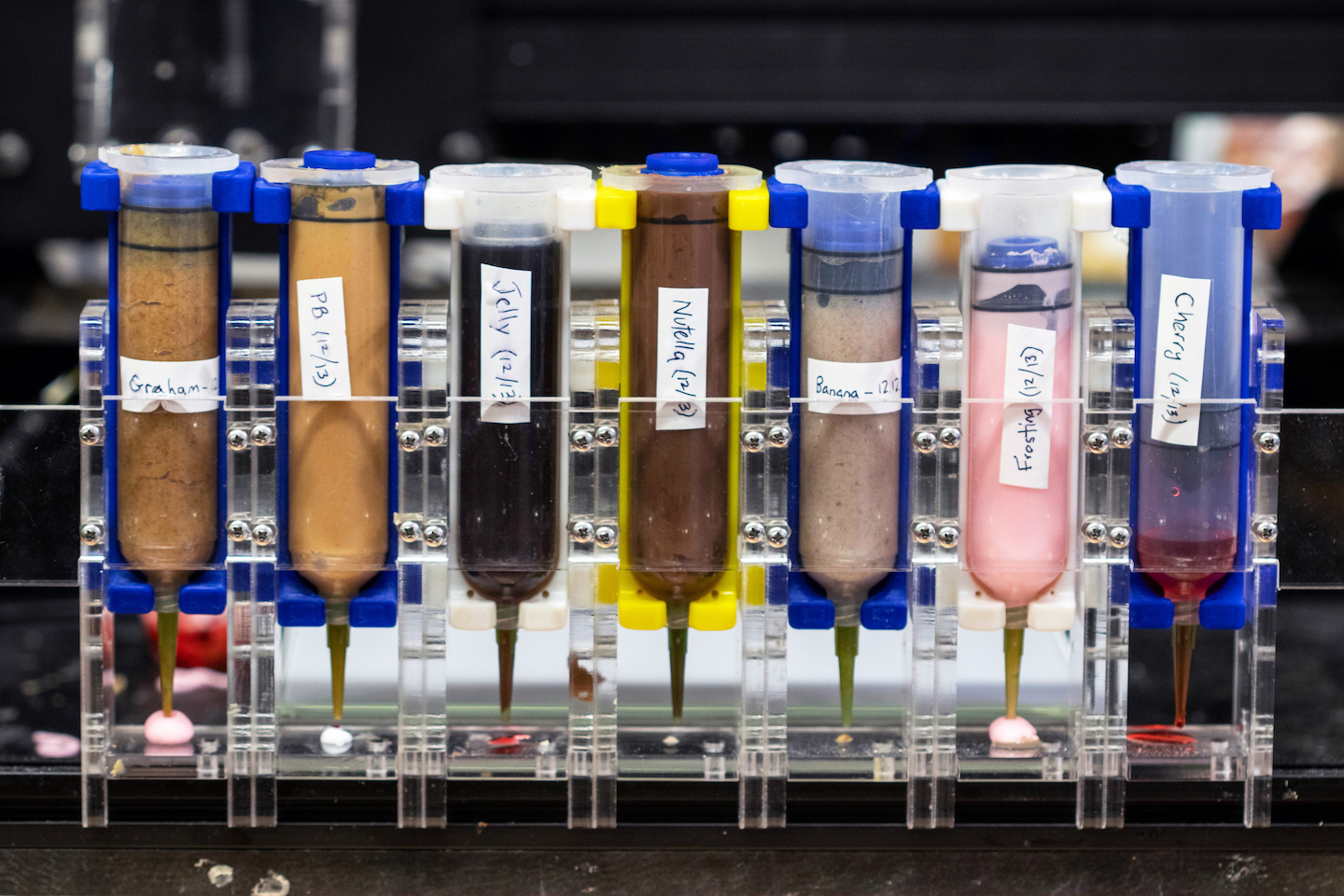
Appetizing or off-putting?
The 3-D printing robot chef can only assemble the ingredients it’s given and then add heat to cook the food. It cannot create foods from pure energy made from biowaste, like the fictional Star Wars replicator does. But people may not yet be comfortable eating even this relatively simple version of machine-made meals, Blutinger says.
Most people are comfortable with items like flour and peanut butter because we know where they come from. As science moves food away from the source, though, people could get grossed out. That 3-D printed cake might be easier for some to eat than 3-D printed meat, for instance. And people who did not grow up with 3-D printers in the kitchen might prefer food from the grocery store, Blutinger says.
“But pretty soon…kids will be growing up with these kinds of food robots in their kitchen,” he predicts. “Then that’s all they’re going to know.”
Macdonald agrees. “It’s just one of those things that people will have to come to terms with.”
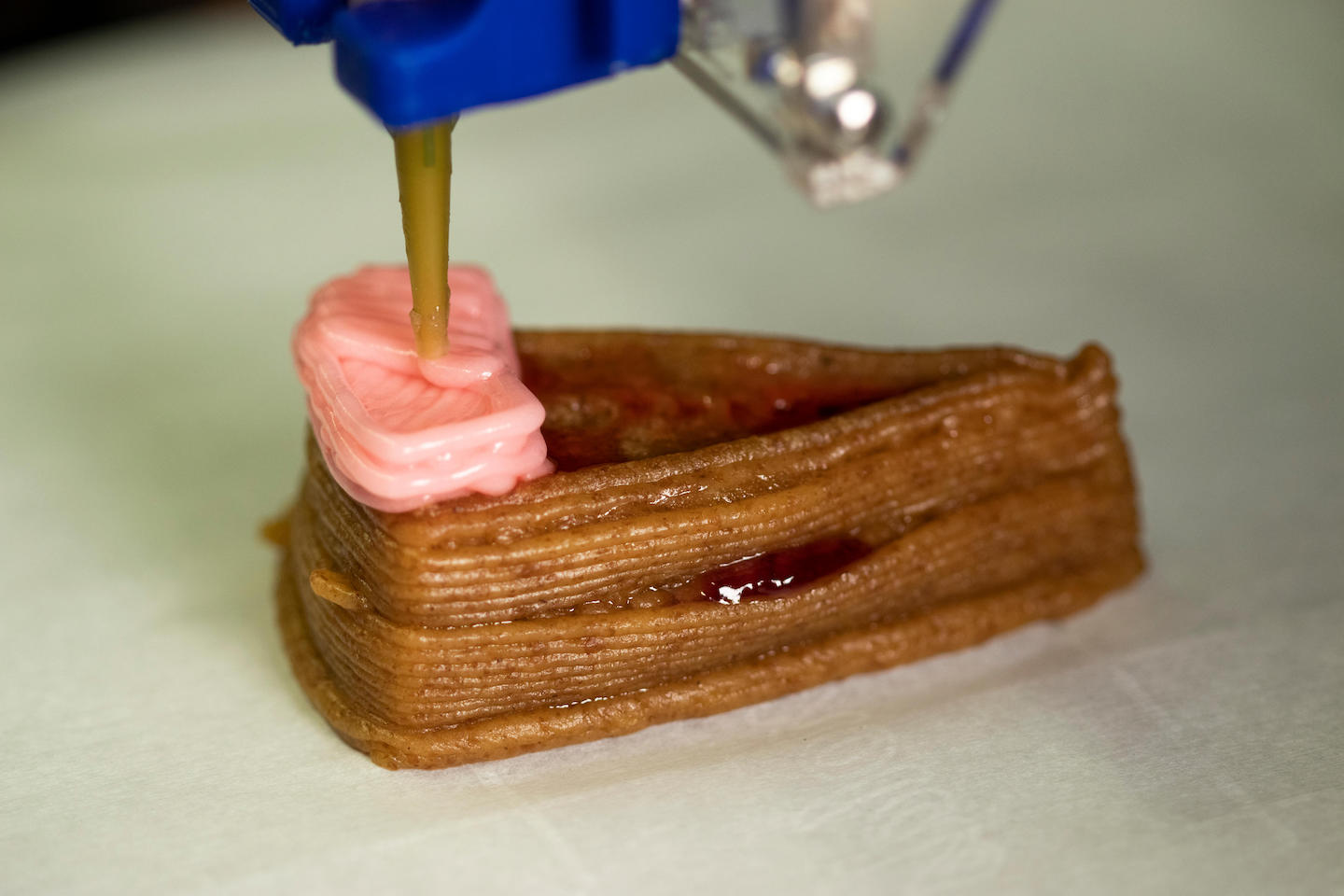
Food printers might be on our kitchen counters within the next 10 to 20 years, Sarri says. These printers could be like “having a personal chef and nutritionist all in one,” Blutinger adds. The machine could someday recommend and create healthier food that’s customized to your diet.
A Star Trek replicator might be possible, but not nearly as soon, says Sarri — maybe 100 years down the line. Those replicators of the future could be useful in areas in beyond outer space. They could provide food in places where putting a chef might be dangerous, such as a war zone.
“There’s a feedback loop,” Macdonald says, “of scientists being inspired by Star Trek and then making that science. And then that continues to feed into the science fiction of, ‘Well this is what we can do now, so what’s next?’”
The next tech to materialize might just be a replicator.
More Stories from Science News Explores on Tech
Scientists Say: Semiconductor

Here’s why AI like ChatGPT probably won’t reach humanlike understanding

Scientists Say: Digital Footprint

How to design artificial intelligence that acts nice — and only nice

‘Jailbreaks’ bring out the evil side of chatbots

A new tool could guard against deepfake voice scams

AI learned how to influence humans by watching a video game

Scientists Say: Bionic

Will AI Deliver a Real Star Trek Replicator? This Founder Is Making It His Mission
M att Putman, co-founder of Peter Thiel-backed manufacturing technology company Nanotronics, wants to make Star Trek technology a reality.
In a waterfront factory in Brooklyn, one founder is boldly going forward with an ambitious initiative: to make technology from Star Trek real. That entrepreneur is Matthew Putman, and while his vision for life imitating science fiction won't be ready in time for Thursday's premiere of season five of Star Trek: Discovery , Putman thinks he's not far off.
The co-founder and CEO of manufacturing technology company Nanotronics, Putman wants to build the next best thing to Star Trek's Replicator, a fictional device that can rearrange particles to create anything from food and drink to complex machinery. His company, which he founded in 2010, supplies microscopes that use artificial intelligence to manufacturing businesses, which use them to monitor and control their fabrication processes. Nanotronics has raised more than $130 million from investors including Peter Thiel .
So where does Star Trek come in? Putman is currently at work on Cubefabs, a modular fabrication plant that uses a proprietary AI to improve manufacturing efficiency in real time. Similar to a 3-D printer, Cubefabs uses automation across several machines to slice semiconductor crystals into thin wafers, imprint circuitry patterns on those wafers, and etch them into a pre-specified shape. While it can't conjure up a dirty martini like the Replicator, Putman thinks Cubefabs can serve a similar purpose and even hopes it can one day solve the problem of resource scarcity and poverty on Earth.
Cubefabs represents Putman's attempt to create low-cost fabricators that use AI to monitor and control every element of fabrication, from the temperature to the speed of production, all in pursuit of making the final product as "atomically precise as possible" to the original design, Putman says. He anticipates that most Cubefabs will be used to create semiconductor chips, but says the facilities could also be used to improve a variety of manufacturing processes, like reducing the materials and time required to develop lab-grown meat. The first Cubefabs are in development now, and Putman anticipates they'll be up and running within 18 months.
A rendering from Cubefabs, a modular, AI-powered fabrication plant.
While Cubefabs are designed to be 1/10th the size of the average semiconductor fabricator, they still need at least one full acre of space to fit all the machines necessary for materials production. Putman got the idea for an AI-driven fabrication plant after an experiment he ran years ago, in which he and his colleagues pitted a human engineer against a 3-D printer powered by AI. The result: The AI agent made stronger, more easily replicable parts than the human engineer.
So will we ever see other Star Trek technology in the real world? Putman says that the Holodeck, a virtual-reality room featured in many of the shows, could become a reality sooner than many anticipate, because of the extreme power of mixed reality and haptics technology. While Putman did recently meet someone who's "working on a Warp Drive," he says we shouldn't expect to be beamed up in a Star Trek Transporter anytime soon.
This post originally appeared at inc.com .
Click here to subscribe to the Inc. newsletter: inc.com/newsletters "

How Are The Replicators Supposed To Work On Star Trek?

Coffee, black, or Earl Grey, hot? If you're a "Star Trek" fan, you've probably heard a character or two say these words. You might think of Captain Kathryn Janeway of "Star Trek: Voyager" and Captain Jean-Luc Picard from "Star Trek: The Next Generation" and "Picard" are just big breakfast drink fans, and they are, but they're also busy leaders of working space starships. They needed a way to get their favored drinks fast. So they turn to their replicators.
Replicators are essential machines in the "Star Trek" universe. This device can reproduce food, tools, and sometimes even random viruses. Depending on the writer's imagination, it can make almost anything. In times of need, the replicator is the only thing that can feed the crew. And being so far from Federation ports and basses, replicators were their best bet in getting that one part they need to fix their warp core containment.
While the replicator has made many appearances on the shows — Janeway even took hers apart in one episode — it's remains a tool of mystery to many. It acts a lot like a transporter, because it kind of beams food. So how are these things imagined to work in the first place? Of course, this is a starship, and the explanation is very sci-fi.
It's kinda gross, really
According to the "Star Trek" website , the reason some people see replicators as mini-transporters is because, well, it technically is one. In "Star Trek," transporters "beam" people and items to different places. They dematerialize matter and reconstitute it somewhere else. The replicator essentially acts the same way. So what matter does it work with? Comic Book reported the not exactly appetizing news. An episode of "Star Trek: Discovery" explained the material comes from fecal matter.
Replicators cannot make new matter because physics simply doesn't allow for that. In the "Trek" universe, scientists had developed a mixture of different materials specifically for food replicators, but it was a finite resource. And so the resource-poor Federation of Planets used something humanity never runs out of: Its own waste. The episode suggests that this sacrifice doesn't come at a human cost, which means the Federation can still claim the moral high ground against their enemies.
Replicators have been in use since the 24th century in the "Trek" universe , though very little has changed around the technology. No matter how advanced, a replicator will only make food programmed into its system. Even so, it beats having to sacrifice a lot of cargo space just to bring thousands of boxes of popcorn. Replicated food will taste mostly the same as the food it mimicked and will also have the same nutritional density. However, that has never stopped intrepid starship captains from bringing the real thing.
Real-life version
Having a replicator certainly means an ability to reproduce just about anything you can think of, provided it's programmed into the machine. So it's very easy to fall into the trap of featuring it in every episode. Bleeding Cool wrote that "Star Trek" writer and producer Ron D. Moore hated the replicator, and so did most people in the writer's room.
Moore said the replicators made everything too easy. If they were stuck somewhere, a character could just replicate something to get them out of a jam. So the writers sometimes avoided using replicators altogether in their episodes.
Fine, in a narrative sense, replicators may make things too easy. But imagine if there was a real-life replicator available. Then, we'd maybe get rid of food deserts once and for all. Fortunately for us, scientists have been working on recreating replicator technology. Per SyFy , researchers at the University of California, Berkeley invented a machine that projects light onto resin to produce an object in minutes. It doesn't re-materialize matter from subatomic particles, but it sure beats waiting hours watching a 3D printer squeeze out plastic.
The technology is based on computed technology, the kind of thing used in medical 3D imaging. The scientists call their new process computed axial lithography. It's not yet fully commercially available, so until then, we're stuck watching our favorite characters eat food replicated from poop.
- PlayStation
- Entertainment
- Lethal Company
- Sponsored Content
- SteamWorld Build
- Warhammer: Age of Sigmar - Realms of Ruin
Star Trek replicators become possible as scientists make matter from just energy
Could we get actual replicators from Star Trek?

Published: 20 Sep 2022 12:25 PM +00:00 Updated: 20 Sep 2022 12:41 PM +00:00
Star Trek has been a major influence on modern technology, inspiring mobile tablets, video calls and more. It seems that we might be getting more tech based on the sci-fi series, as scientists have seemingly recreated matter replicators.
For those unaware, replicators were machines that could create things from energy, like food, outfits and more. While the replicators created by the scientists aren’t as magical, it could be the start of something if things progress.
Creating something from nothing?
Big Think reports that a group of researchers were able to create matter from nothing with really strong electric fields. Though not as handy as the Star Trek replicators, this could be the first step towards true replication devices.
With these electric fields, researchers were able to enable the spontaneous creation of particle-antiparticle pairs from just energy, which is incredible. It’s a theory that was conceived by Julian Schwinger, one of the founders of quantum field theory, and it might come true.
At long last, this proves that humans can indeed create something from nothing, which is a theory no one expected to come true. Right now, it seems that they won’t be able to make any kind of solid item but that can always change.
The last closest device to a Star Trek replicator was the concept of 3D-printed meat. However, this is the closest we’ve ever gotten to creating items from pure energy. Isn’t that amazing?
Read More: Star Trek: Deep Space 9 reunion leaves a lot to be desired

Star Trek replicators coming soon?
Considering how replicators in Star Trek could create food and other important items, real life has a long way to go. Still, this is a very positive step in the right direction and we’re interested in seeing more development in the story.
Much like Star Trek, our current life is now filled with robots and AI living alongside humans, albeit as workers. The only thing we need is normalized space travel, though that won’t be happening anytime soon, given how much training is needed.
Star Trek: Picard Season 3 will premiere on Paramount+ next year, on February 16, 2023.
Explore new topics and discover content that's right for you!
- More to Explore
- Series & Movies
Published Mar 23, 2013
Trek Class Blog: Inventing The Replicator

Inventing the Replicator by Professor Anthony Rotolo
Star Trek ’s replicator is an amazing technology concept that has fascinated us for decades. Working at the molecular level to synthesize materials, the replicator is able to instantly produce nearly any object, food or medicine on demand. It is easy to imagine how the replicator would quickly change the world. Such a device could dramatically reduce or even eliminate the cost of most products. Hunger and poverty would be stamped out worldwide, and much of the time and energy spent working for a living could be used instead for pursuits of education, exploration and the advancement of society.

Star Trek envisions the future of humanity to be one of incredible achievements made possible by evolved philosophies as well as technologies. This hopeful view of tomorrow is perhaps the reason so many have dreamed of inventing real-life versions of Star Trek tech -- from the transporter to the tricorder -- and the replicator is one of the most coveted.From a scientific perspective, aspects of the replicator are theoretically uncertain. Researchers have made slow progress working in this area, but a true breakthrough on the scale of a Star Trek replicator seems centuries away. The day when we will prepare dinner or produce complex equipment at the push of a button (or with a voice command) could be as far away as our own 24th Century.
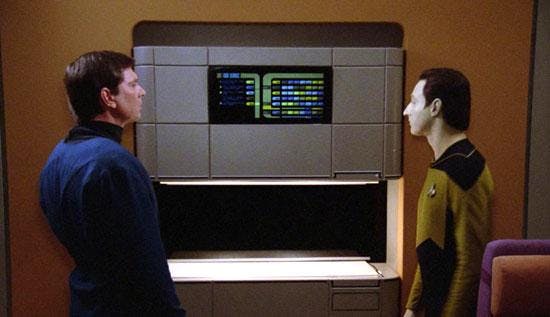
Even if the full vision of the replicator remains beyond our capabilities, perhaps some version of this technology is possible today. After all, the real appeal of the replicator is not in its molecule-synthesizing abilities, but in the value of instant, custom objects made on demand. This is a reality that some are working toward right now using new technologies that could eventually bring us much closer to making the replicator a reality.A process called “additive manufacturing,” or its more popular nickname, “3D Printing,” has captured the imagination of the tech industry. These machines work much like the two-dimensional printer you may have on your desk, but instead of printing a layer of ink, a 3D printer extrudes many layers of melted plastic to form a physical object. You can imagine this as similar to a hot glue gun, where the heated glue stick is carefully extruded from a nozzle. In the case of a 3D printer, that nozzle is controlled by software and digital design files that tells it how to form a shape.
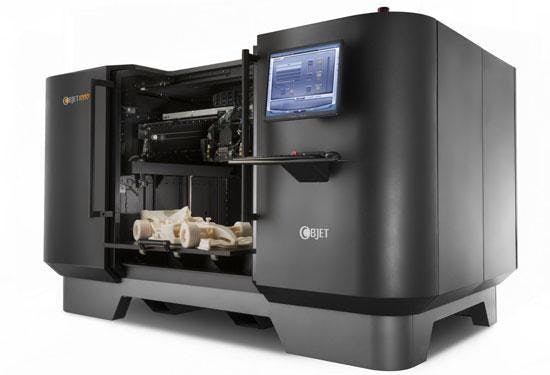
Some have compared 3D printers to modern-day replicators, and it’s easy to see how. Watching one in action is a wondrous experience, with objects that once had to be produced on a factory line fabricated in minutes by a machine not much larger than a microwave. Even complex objects with moving parts can be designed and created one-by-one with a little knowhow. It hardly seems like a coincidence that one of the more popular 3D printer models currently available is actually named the Replicator.The comparisons between 3D Printing and the Star Trek replicator don’t end with plastic. Other materials like wood, metal and even some foods are now being extruded in similar ways to make on-demand creations. This has led to excited speculation that soon we may see the beginnings of a new era of manufacturing in America and around the world, where small-scale production is possible at very low costs. We may even “print” biotechnologies and human organs one day.
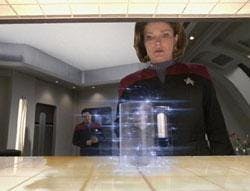
______________Anthony Rotolo is a professor at Syracuse University where he teaches “Trek Class.” He is also the founder and “Captain” of the “Starship NEXIS,” a lab that explores new and emerging technologies.
Get Updates By Email
Create a free profile to get unlimited access to exclusive videos, sweepstakes, and more!
Star Trek replicator finally replicated by real-life scientists
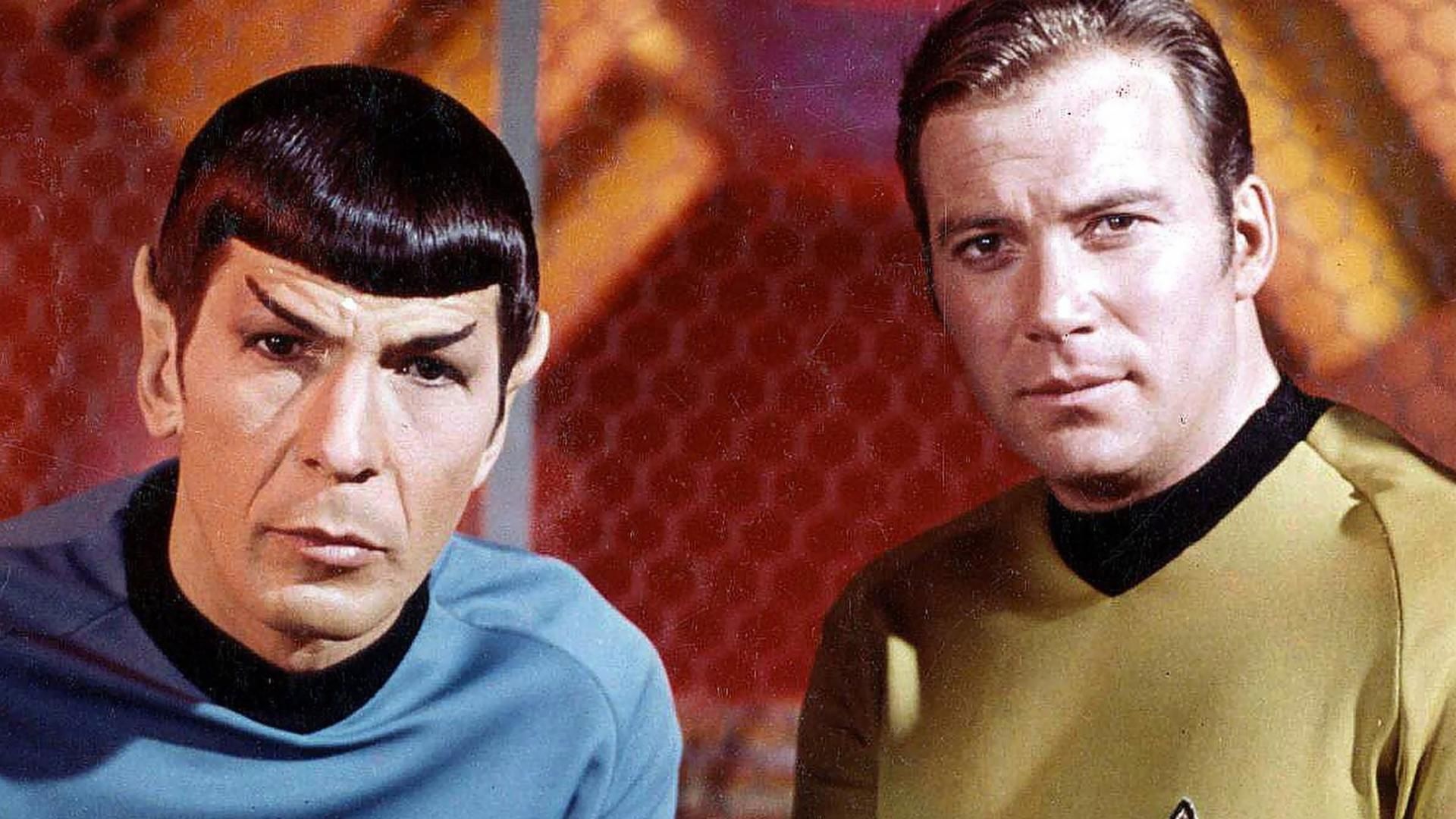
Credit: CBS Studios Inc.
Star Trek has been prescient about future technology ever since showing off a nascent cell phone in the pilot episode of the original series. But that doesn’t make the creation of this real-life replicator any less astonishing.
Throughout the incarnations of Star Trek , the replicator has produced a variety of human necessities to the good Starfleet folks exploring the outer reaches of space, primarily food and drink, but also spare parts, uniforms, and even breathable air. But as far as we know, they never instantaneously produced a miniature replica of Rodin’s “The Thinker.”
Intrepid researchers from Lawrence Livermore National Laboratory and the University of California, Berkeley have done just that, and created a wholly different approach to 3D printing. Amazingly, it looks very much like Star Trek’ s replicator, but instead of fictionally dismantling objects into sub-atomic particles or actually slowly 3D printing something layer by layer, the new approach projects light into resin, which produces small objects in a matter of minutes.
The new technology is based on the principles of computed tomography (CT), frequently used in medical and industrial 3D imaging, but never before used in the process of fabrication. But where traditional 3D imaging takes multiple X-rays to produce a 3D map, this tech reverse engineers the 3D object into 2D components, which are then projected as slides of light into the gooey resin.
"We saw that the underlying theoretical framework of CT could be adapted in a powerful way to generate arbitrary 3D geometries by building up a light dosage distribution within a volume of light-sensitive material from many different illumination angles," electrical engineer and UC Berkeley assistant professor Hayden Taylor told SYFY WIRE via email. "Once we had made the initial demonstration of the technology, the analogy with 'The Replicator' suggested itself to a couple of the students working on the project, and it stuck!"
“Our new process is called Computed Axial Lithography (CAL), and prints entire 3D objects into light-sensitive materials all at once,” Taylor told Digital Trends . “The process involves rotating a container of light-sensitive material, while projecting into it a sequence of computed light intensity patterns that are synchronized with the rotation. Over time, a 3D pattern of light energy is delivered to the material by more than a thousand different projections. Where the energy delivered exceeds a critical threshold, the material undergoes a chemical reaction and the part is formed.”
Check out the Nature Video above to get a better understanding of the process, or read the paper, "Volumetric additive manufacturing via tomographic reconstruction," published via Science .
This is impressive tech, no doubt, and will likely lead to a wide range of printable opportunities, including much larger objects.
"We expect (but have not yet shown experimentally) that it should be possible to print objects up to 0.5 meter diameter with features down to 0.1 to 0.2 mm at a rate of several liters per minute using a high-end 4K projector," Taylor told SYFY WIRE. "Of course there will no doubt be plenty of engineering challenges to be addressed on the way, but we have not yet identified an insurmountable limitation to scaling of the process."
So who knows, maybe they’ll be able to replicate that transporter we’ve all been hoping for.
Related Stories

Deep Sea Animated Fantasy Film Streaming Now on Peacock

How The Chronicles of Riddick Turns a Simple Sci-Fi Story Into Dune
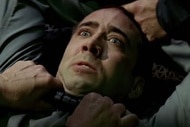
Face/Off Remains One of the Best & Wildest '90s Action Movies

Kristen Dunst Reveals Dangerous Spider-Man Stunt She Refused

Michelle Rodriguez reflects on Fast Saga's hip-hop ethos

Bruce Almighty Writers Pitched Devil-centric Sequel

Why Fast Five Remains One of the Greatest Films in the Fast Saga

R.I.P.D. Creators Talk Abandoned Franchise & Resurrection Hopes

Why Tokyo Drift is the Perfect Fast & Furious Spinoff

Flushed Away Director On Aardman's First CG-Animated Feature

Anthony Mackie On John Doe Vs. Sam Wilson

Bruce Almighty Teleprompter Scene Wasn't in Original Script
Recommended for you.

Linda Hamilton on Resident Alien Role: "I'm Not the Funny Girl, I'm the Straight Man"

The Classic Twilight Zone Episode That Inspired Jordan Peele's Us

Resident Alien's Alan Tudyk on Harry's New Love Interest, Edi Patterson's Blue Avian
Smithsonian Voices
From the Smithsonian Museums

SMITHSONIAN BOOKS
The Influence of Star Trek and Science Fiction on Real Science
For Star Trek Day, learn about the relationship between sci-fi and real-life science in this excerpt from “Reality Ahead of Schedule”
:focal(800x602:801x603)/https://tf-cmsv2-smithsonianmag-media.s3.amazonaws.com/filer_public/b0/96/b096b98c-3581-4361-a150-3b7e655816b9/starship_enterprise.jpg)
As with several other iconic Star Trek technologies, replicators are directly responsible for inspiring developments in real-life technology, which use 3-D printing to create food, meals, plastic and metal items, buildings, and even complex machine parts. Star Trek is far from being the only sci-fi source of inspiration for the dream of a device that can produce finished items from scratch.

Reality Ahead of Schedule: How Science Fiction Inspires Science Fact
A rich visual history of science fiction's impact on real-world technologies, this book is perfect for lovers of H. G. Wells, Star Trek, Isaac Asimov, Jules Verne, Aldous Huxley, and 2001: A Space Odyssey.
To trace the roots of Star Trek ’s replicator, it is necessary to understand that it is essentially a repurposed form of the transporter—the teleportation or matter transmission device that “beams” the crew between starship and planet surface. According to legend, the transporter was invented only because the original series lacked the budget to film special, effect-heavy scenes of planetary landing shuttles, but Star Trek did not invent the concept of matter transmission. Its first appearance in science fiction dates back at least as far as 1877, in Edward Page Mitchell’s story “The Man Without a Body,” which prefigures George Langelaan’s much better-known 1957 story “The Fly,” by having a scientist experience a teleportation mishap when his batteries die while he is only partway through a transmission, so that only his head rematerializes. The replicator uses the same basic principle as the transporter, in which the atomic structure of a physical object is scanned and the information is used to reconstruct the object at the “receiving” end through energy-matter conversion. In practice, all transporters are replicators and matter “transmission” is a misnomer, because matter itself is not transmitted, only information. Every time Captain Kirk steps out of the transporter having “beamed up” from a planet’s surface, it is, in fact, a copy of him—the original has been disintegrated during the initial phase of the operation.
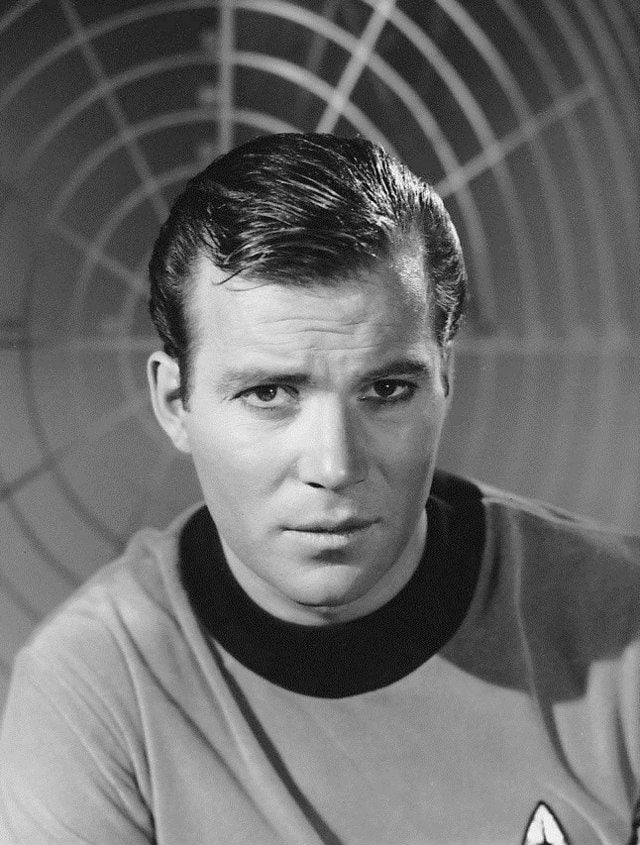
In the world of the TV series, the replicators of Picard’s Enterprise are a development of food synthesizers— simpler machines present on James Kirk’s Enterprise in the original Star Trek series (known as The Original Series , or TOS). These closely resemble the later replicators but were conceived by the writers of TOS more as highly advanced, mechanical food preparation devices instead of matter-energy converters. They, therefore, represented a televisual outing for a concept long popular in science fiction: the automatic food preparation device. A machine that performs complex autonomous physical tasks can reasonably be described as a robot, and, as early as 1899, Elizabeth Bellamy’s novel Ely’s Automatic Housemaid features a robot cook, which might be seen as a precursor to later food synthesizers. Unspecified “mechanical apparatus” was at work in the automated cafeterias of Edgar Rice Burroughs’s Mars. In his 1912 A Princess of Mars , Burroughs, probably inspired by the automat (a kind of vending machine café imported from Germany to the United States in 1902), describes “gorgeous eating places where we were served entirely by mechanical apparatus. No hand touched the food from the time it entered the building in its raw state until it emerged hot and delicious upon the tables before the guests, in response to the touching of tiny buttons to indicate their desires.”
Moving from Burroughs’s mechanical cafeterias to a Star Trek -style food synthesizer was simply a matter of miniaturization, and, by 1933, David H. Keller was imagining “a small but complete production laboratory, not much larger than [an] electric refrigerator … entirely automatic and practically foolproof.” In his story “Unto Us A Child Is Born,” Keller envisages a machine that can both create food and prepare it “for the table in any form desired by the consumer. All that was necessary was the selection of one of the twenty-five menus and the pressing of the proper buttons.” Only recently has this dream of a kitchen appliance-scale food synthesizer neared reality, with the launch of the Genie food replicator, explicitly inspired by Star Trek ’s replicator. The Genie, a device not much larger than a microwave with futuristic styling, claims to be “a kitchen in a box” that can make nutritious, freshly cooked meals in 30 seconds. However, it should be noted that the device relies on pods that contain dehydrated ingredients; in other words, the food preparation labor has simply been moved upstream in the process, and the Genie might be little more than a device for adding hot water to a cup of dried noodles.
/https://tf-cmsv2-smithsonianmag-media.s3.amazonaws.com/filer_public/97/87/9787a907-dd0b-4106-9b64-6e4c849f0ff8/3d_printer.jpg)
So what is meant by today’s technology boosters when they talk excitedly about Star Trek -inspired, real-life replicators? The technology to which they refer is the 3-D printer, a device that lays down some form of plastic (in the sense of malleable) medium in layers to build up a three-dimensional form. Such printers are heralded as the drivers of a second Industrial Revolution, in which manufacturing is distributed and universal, available to all through desktop 3-D printing machines. These devices are already available, usually restricted to fabrication using quick-setting plastics or resins, but larger and more specialized machines can print in media varying from living cells and foodstuffs to metal to mud or concrete. Large-scale concrete printers, for example, are suggested as a solution to housing crises, such as those found in refugee camps, where rapidly assembled, cheaply erected structures are needed. Meanwhile, biological implants and replacement tissues can be printed by laying down layers of cells on organic scaffolding, and, in the near future, it may be possible to print entire organs for transplant.
Although the 3-D printing community often plays up the lineage of inspiration from Star Trek ’s replicators to desktop fabricators, in practice, the former has a completely different mechanism. The true conceptual forefather of the 3-D printer is a 1964 story by Italian writer Primo Levi, “L’ordine a buon mercata” (“Order on the Cheap”). A mysterious multinational enterprise of dubious intentions makes available a device called the Mimer duplicator, which can create exact replicas of anything from money and diamonds to food and humans. It works by extruding “extremely thin superimposed layers” of a multielement substance named “pabulum.” This is a concise and extremely accurate description of how a modern-day 3-D printer works.
Star Trek featured gadgetry and devices that have since become iconic, and that have been directly responsible for inspiring the gadgetry and devices that have come to dominate modern personal technology—including the smartphone and the tablet computer—and perhaps soon to include portable, personal medical devices. Science and technology sometimes progresses in mighty leaps, but more generally it advances incrementally, contingent on prior research.
Reality Ahead of Schedule: How Science Fiction Inspires Science Fact is available from Smithsonian Books. Visit Smithsonian Books’ website to learn more about its publications and a full list of titles.
Excerpt from Reality Ahead of Schedule © 2019 by Carlton Books Limited

IMAGES
VIDEO
COMMENTS
A Star Trek replicator might be possible, but not nearly as soon, says Sarri — maybe 100 years down the line. Those replicators of the future could be useful in areas in beyond outer space. They could provide food in places where putting a chef might be dangerous, such as a war zone.
A startup with alumni from MIT and Yale says it's made a breakthrough in creating a next-generation material that should make it possible to 3-d print literally anything out of thin air.
In Star Trek a replicator is a machine that can create (and recycle) things. Replicators were originally seen to simply synthesize meals on demand, but in later series much larger non-food items appear. The technical aspects of replicated versus "real" things is sometimes a plot element.
The co-founder and CEO of manufacturing technology company Nanotronics, Putman wants to build the next best thing to Star Trek's Replicator, a fictional device that can rearrange particles to...
The replicator might have groundbreaking implications, but it does have some inherent limitations as well: the objects it produces are small, and require special synthetic resin to produce. But it's an exciting new technology - and one that could lead to a Star Trek future.
It's not yet fully commercially available, so until then, we're stuck watching our favorite characters eat food replicated from poop. Replicators are essential machines in the "Star Trek" universe. This device can reproduce food, tools, and sometimes even random viruses.
Creating something from nothing? Big Think reports that a group of researchers were able to create matter from nothing with really strong electric fields. Though not as handy as the Star Trek replicators, this could be the first step towards true replication devices.
Even if the full vision of the replicator remains beyond our capabilities, perhaps some version of this technology is possible today. After all, the real appeal of the replicator is not in its molecule-synthesizing abilities, but in the value of instant, custom objects made on demand.
Amazingly, it looks very much like Star Trek’s replicator, but instead of fictionally dismantling objects into sub-atomic particles or actually slowly 3D printing something layer by layer, the new approach projects light into resin, which produces small objects in a matter of minutes.
To trace the roots of Star Trek ’s replicator, it is necessary to understand that it is essentially a repurposed form of the transporter—the teleportation or matter transmission device that...